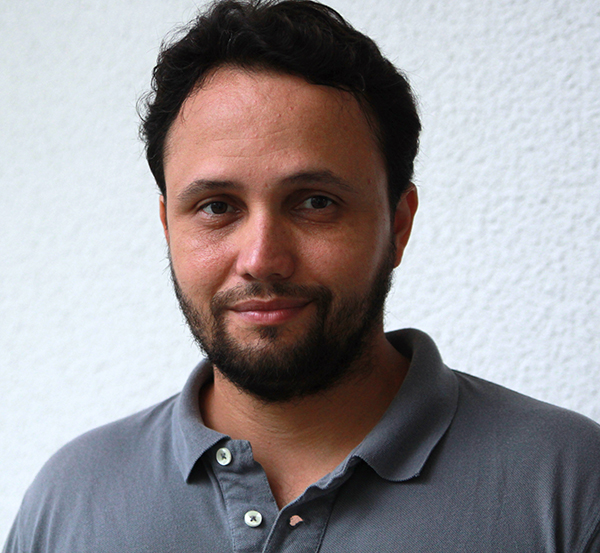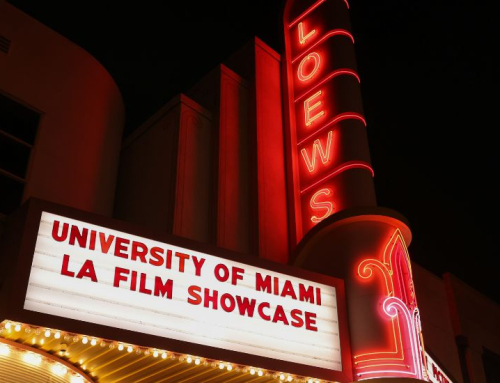Before enrolling in the MFA film program at the School of Communication a year ago, Luis Jose Galvis Diaz studied journalism in Bucaramanga, Colombia, and worked as a television producer, a radio commentator and a film critic. He also taught history of cinema at the Universidad Autonoma de Bucaramanga.
“I love movies,” Galvis said recently, “but more than anything, I am a storyteller. I came to film by way of writing.”
Among the many stories he tells is that of the film industry in his native state of Santander. He recently completed the research for a book on the topic, to be published by the Universidad Autonoma.
Galvis was the principal investigator on the project, for which he teamed up with two Bucaramanga colleagues, Adaulfo Enrique Mendoza and Ella Carolina Cardona. He had worked with them on two earlier projects, a multimedia children’s workbook about Santander, and a study on the distribution of Colombian films.
“I noticed no one had told the story of Santander filmmakers, so I decided to do it,” Galvis said.
The history of film in Santander begins early – in 1897, when Bucaramanga hosted the film screening in Colombia – a showing of one of Thomas Edison’s vitascopes. And, as Galvis tells it, it is one full of drama, dreamers and sometimes tragedy.
It begins with Felix Joaquin Rodriguez, the son of a schoolmaster who, at 19, quit school to set off on an adventure that took him through the Caribbean and eventually to New York and California. In San Francisco, Rodriguez worked in films as an extra, helping to build sets and as a lightning technician. In time, he learned to use a camera and eventually returned to Colombia “with a camera and the dream to make a film,” Galvis said.
In 1926, Rodriguez wrote, directed, designed and produced “Alma Provinciana,” a silent film that is among the best made in Colombia at the time, Galvis said. But Rodriguez was never able to find backing for his second feature and committed suicide in 1931.
“He had the fighting spirit of the people from Santander,” Galvis said. “His story is so fascinating that I would like to make a film about him.”
In all, the story of film in Santander includes 16 directors, Galvis said. Some, like Andres Platarrueda, Augusto Schroeder and Pedro Gamboa, were solitary, self-taught figures who worked independently during the 1950s and 1960s.
In the late ’60s, Carlos Alvarez became known for his documentary films denouncing social inequality and government abuses. “It was militant cinema,” Galvis said, “for which he was persecuted and imprisoned for 18 months.”
More recently, Santander filmmaker Mario Ribero, the Moscow trained director of two full-length features, gained international renown for his television work: He is the director of the blockbuster telenovela “Betty La Fea,” which ABC successfully remade for American television as “Ugly Betty.” Ribero has made two comedy films, “El embajador de la India” y “Mamá tómate la sopa”.
The new wave of Santander directors also includes Libia Estrella Gomez, the second Colombian woman to film a full-length feature, Galvis said. Her “La Historia del Baul Rosado” was released in 2005 and she is now working on her second movie, “Ella”, Galvis said. Another one is Ivan Gaona, whose short films have received awards in festivals around the world.
Galvis himself hopes to join the ranks of Bucaramanga filmmakers. He is studying at UM on a Fulbright fellowship, focusing on writing and directing. His 7-minute short, “3:38,” was presented last spring at the Canes festival and has been selected for New York’s Bicycle Film Festival and the Santander International Film Festival, Nuestro FICS.
Galvis will present his research on the history Santander cinema on Monday, Sept. 23, at 12:30 p.m. in CIB 2055.







